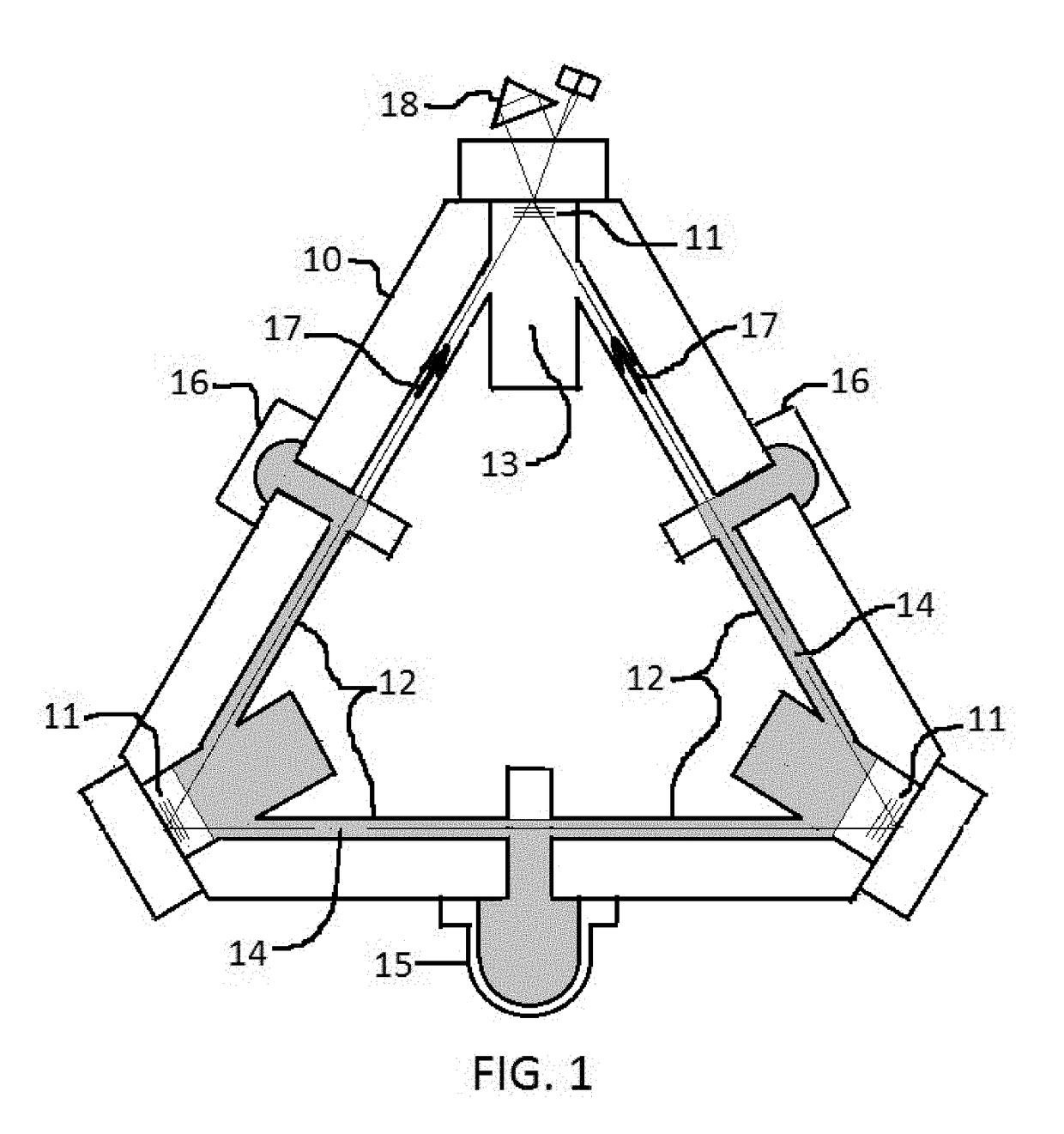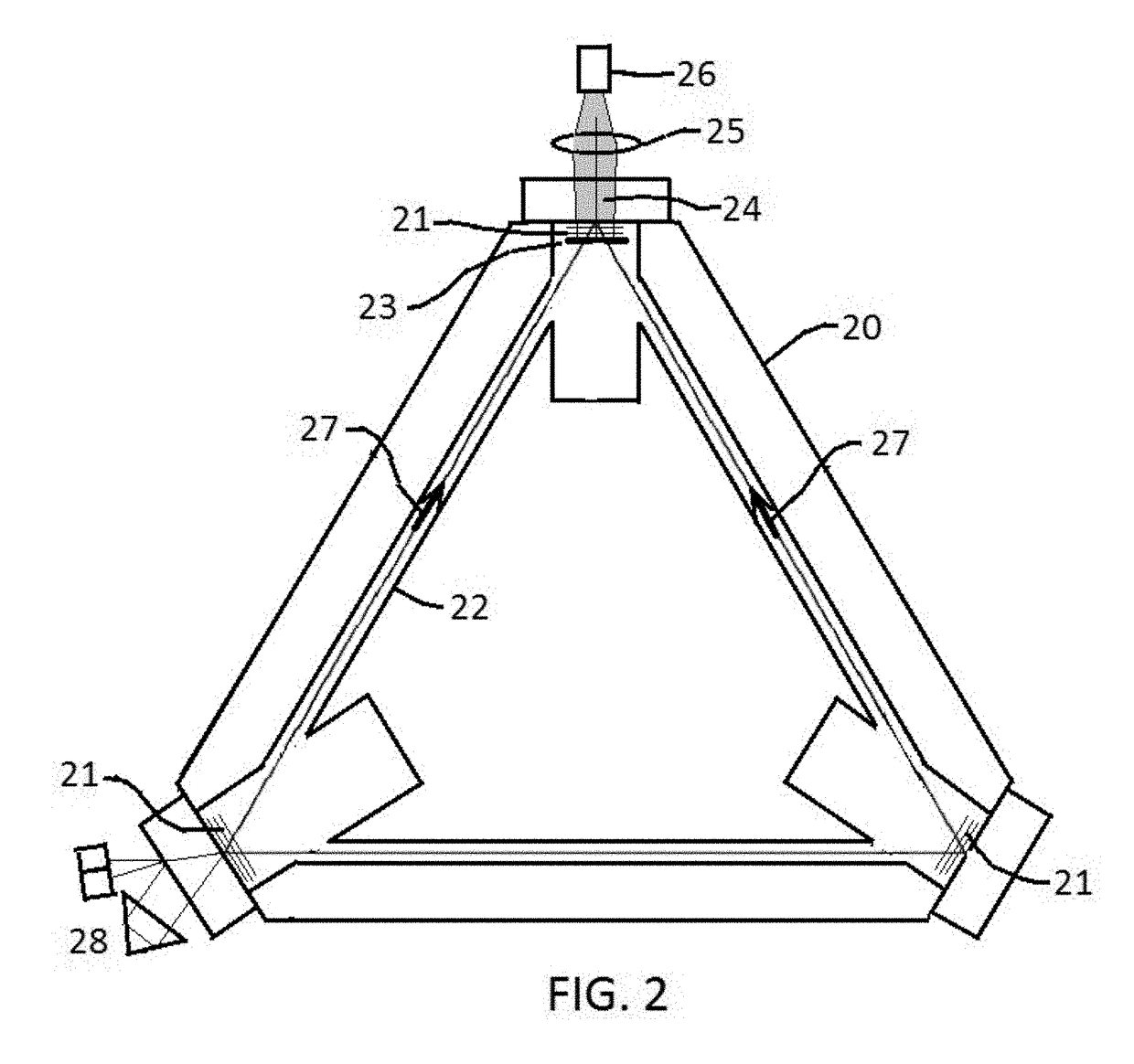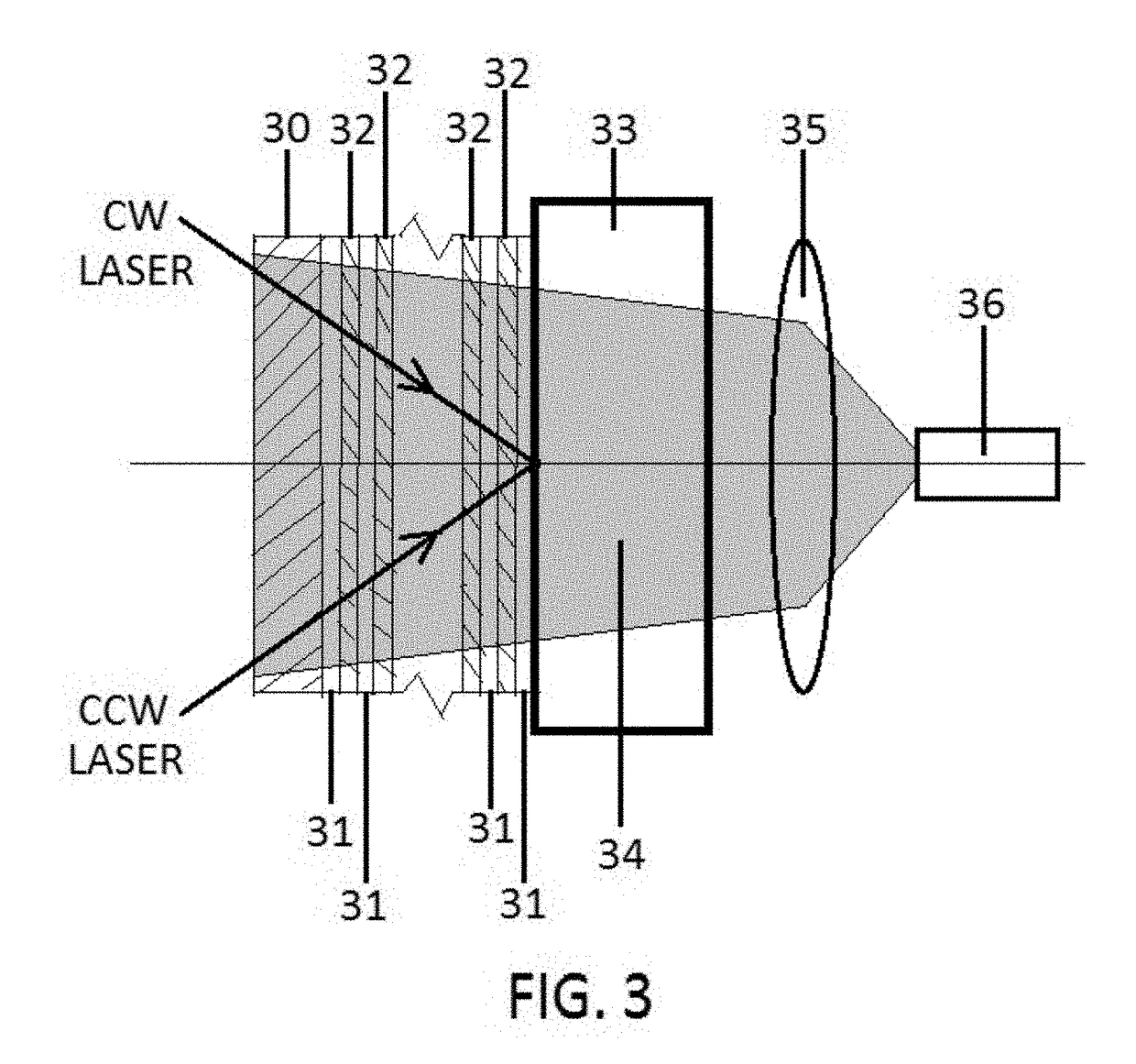Gain mirror for solid state ring laser rotation sensors
a technology of laser rotation sensor and gain mirror, which is applied in the direction of laser details, active medium material, active medium shape and construction, etc., can solve the problems of no better method, lifetime, reliability, performance and size limitations of gas discharge, and high manufacturing cost, so as to improve the lifetime, reliability and performance of ring laser rotation sensor, eliminate negative effects, simple and easy-to-construct design
- Summary
- Abstract
- Description
- Claims
- Application Information
AI Technical Summary
Benefits of technology
Problems solved by technology
Method used
Image
Examples
Embodiment Construction
[0018]A conventional gas discharge ring laser shown in FIG. 1 is formed by attaching three high reflectivity multilayer dielectric mirrors 11 onto an ultra stable, low coefficient of expansion glass-ceramic body 10 which has appropriate cavities machined into it which behave as gain tubes 12 when filled with Helium-Neon gases 13 at low pressure and excited by an high-voltage, low-current electrical discharge 14 between a cathode 15 and a pair of anodes 16. When the discharge is excited, laser light is generated in the triangular optical cavity defined by the three mirrors 11. Two counter propagating beams of light 17 travel around the optical cavity through the gain tubes. When the laser body is stationary in inertial space the two beams of light have identical frequencies, but when the body rotates the beams of light differ in frequency. This frequency difference can be measured by extracting minuscule amounts of light from each beam and overlaying them onto a pair of optical detec...
PUM
 Login to View More
Login to View More Abstract
Description
Claims
Application Information
 Login to View More
Login to View More - R&D Engineer
- R&D Manager
- IP Professional
- Industry Leading Data Capabilities
- Powerful AI technology
- Patent DNA Extraction
Browse by: Latest US Patents, China's latest patents, Technical Efficacy Thesaurus, Application Domain, Technology Topic, Popular Technical Reports.
© 2024 PatSnap. All rights reserved.Legal|Privacy policy|Modern Slavery Act Transparency Statement|Sitemap|About US| Contact US: help@patsnap.com










